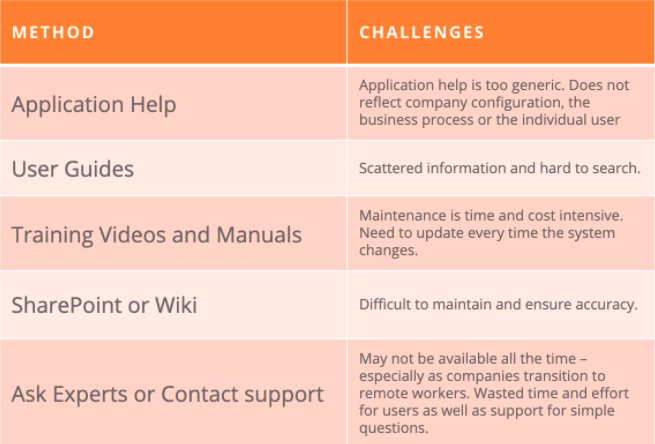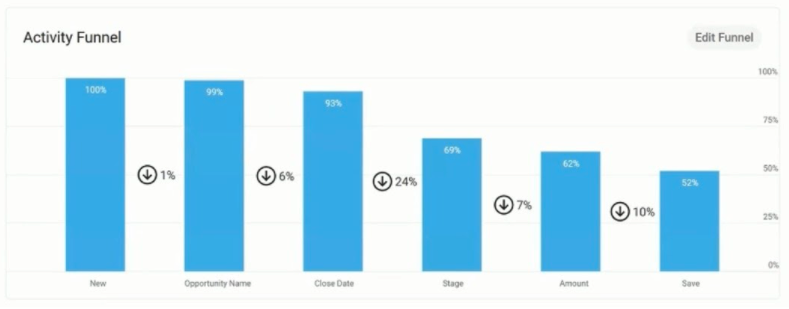Continuous digital transformation is a fundamental part of business today — especially for companies that want to keep up with the breakneck pace of innovation today.
Global spending on digital transformation in 2020 was around $1.3 trillion. Still, 70 percent of digital transformation initiatives fail to meet their targets. How could that be?
Too often, businesses treat digital transformation as an IT process that only concerns software deployment and employee training. Procure the software, teach people how to use it, and you’re done.
In reality, digital transformation is a much more complex process that fundamentally changes how you operate and deliver value. It’s not black and white, all or nothing. It’s a learning curve that outputs a lot of metrics, and companies can use them to keep track of their progress against their objectives and improve over time.
Why Digital Transformation Fails
The key to a successful digital transformation is ensuring users adopt both the new software and the business processes it is intended to support. Therefore, a key part of digital transformation is digital adoption: How effectively is the new software being used? How does it help your business goals? The truth is that most companies simply don’t know and don’t have any data to justify their increased SaaS costs.
That’s why defining and tracking metrics for digital adoption is key in measuring and improving your actual digital transformation ROI. Relying on intuition and subjective opinions makes it hard to know and justify your investment, especially since most digital adoption projects can take a long time to be reflected in your company’s KPIs — customers, transactions, revenue and efficiency.
Put simply, if you can’t measure it, you can’t improve it. Measuring digital adoption is key to delivering on digital transformation.
How DAPs Steer Digital Transformation to Success
Digital adoption platforms (DAPs) introduce a completely new way of looking at digital transformation by combining and analyzing every aspect of software engagement, from employee onboarding and training — through real-world learning on-the-job and constant change management — to demonstrable increases in employee efficiency.
Instead of running through the simple how-to of your new software in classroom scenarios, DAPs can show specific employees better and faster ways to accomplish their real-life business tasks, at the moment that they most need it.
For a successful digital transformation outcome, it’s not as much about the software as how you actually use it. So think of DAPs as hands-on training and support, followed by actual productivity analysis.
4 Key Metrics a Digital Adoption Platform Measures and Improves
- Training and onboarding
- Process efficiency
- Data quality
- Ongoing support
1. Training and Onboarding
The problem with traditional software onboarding is that employees forget most of what they have learned in the classroom by the time they leave the room.

Theoretical explanations and walkthroughs just don’t work well in the context of actual business tasks and objectives. It’s much more effective to train employees by showing them how to use new software to do their job easier, better and faster.
DAPs cut the time spent on in-classroom training and prioritize leveraging new software for actual task completion. The focus of DAPs doesn’t revolve around learning new tools, but rather finding the best ways to complete the tasks at hand.
2. Process Efficiency
As mentioned above, digital transformation is not all about which tools you use, but how you use them, which should take into consideration the actual business processes within your organization and all the software they involve.
So if you’re looking for a new project management system, it’s not just training your employees how to create tickets in Jira or Asana — you have to think through the flow of the business process associated with it:
-
Who decides which tickets to create?
-
How do they relate to other tickets?
-
What happens after a ticket is completed?
Introducing any new process should also have a positive impact on the efficiency of your business as a whole, such as increased automation and improved completion rate or completion time.
3. Data Quality
The problem with most efforts of digital transformation is really the absence of reliable data to assess why the use of software for certain processes succeeds or fails. Frequently, new software might not quickly take off and may be abandoned without any deep analysis or rationale.

DAPs help you monitor new digital adoption processes step by step, user segment by user segment, and they can tell exactly how they are being followed. As a result, you can tweak your training process or adjust the level of support to integrate the process better or decide to try another software based on real data.
DAPs can also monitor and address the primary culprit for any failed process: data input quality. Through a DAP, you can monitor how data is input and create required procedures to address any quality issues improving the successful completion of a process and the quality and reliability of the data it creates.
4. Ongoing Support
A high volume of simple support tickets is indicative of software training gone wrong. And since support is ongoing, it often turns out to be the largest hidden cost in your digital transformation efforts. This is especially true beyond the initial onboarding, when continuous change management has rendered the traditional training obsolete and guidance needs to be continually updated.
DAPs help companies avoid stretching their IT support resources by initiating step-by-step walkthroughs of actual business projects and tasks from the start. As a result, the number of support tickets and the cost of support should decline rapidly.
The Takeaway
Today, digital transformation is as important as ever. In fact, delaying it tends to cost even more in the long run. DAPs themselves represent a digital transformation over traditional software training — while helping your company adopt new processes and find untapped pools of efficiency throughout the whole organization.
It’s true that the digital world is moving fast, but with a DAP, you stand a better chance of coming out ahead.





